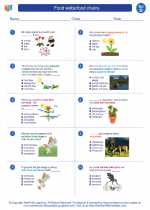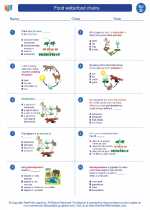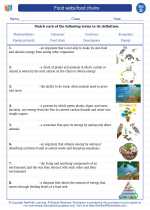Gases
Let's start by understanding what gases are. Gases are one of the states of matter, along with solids and liquids. Unlike solids, which have a fixed shape and volume, and liquids, which have a fixed volume but not a fixed shape, gases have neither a fixed shape nor a fixed volume. This means that gases can expand to fill the entire container they are in.
Properties of Gases
Gases have several unique properties that distinguish them from solids and liquids:
- Expansion: Gases expand to fill the entire volume of their container.
- Fluidity: Gases can flow and move past one another.
- Compressibility: Gases can be compressed into a smaller volume under pressure.
- Diffusion: Gases mix and spread out evenly when not confined to a specific volume.
- Low Density: Gases have low density compared to solids and liquids.
Behavior of Gases
The behavior of gases is governed by the gas laws, which describe the relationship between the pressure, volume, and temperature of a gas. The three main gas laws are:
- Boyle's Law: Describes the inverse relationship between pressure and volume when the temperature is constant.
- Charles's Law: Describes the direct relationship between volume and temperature when the pressure is constant.
- Gay-Lussac's Law: Describes the direct relationship between pressure and temperature when the volume is constant.
Gas Mixtures
Gases can also mix together to form gas mixtures. The composition of a gas mixture can be homogeneous (uniform throughout) or heterogeneous (non-uniform). Some common gas mixtures include air (a mixture of nitrogen, oxygen, carbon dioxide, and other gases) and natural gas (a mixture of methane, ethane, propane, and other hydrocarbons).
Applications of Gases
Gases have numerous applications in our daily lives and various industries. Some common uses of gases include:
- As a fuel for heating and cooking (e.g., natural gas, propane)
- In refrigeration and air conditioning systems (e.g., refrigerant gases)
- In medical applications (e.g., oxygen for respiratory support)
- In industrial processes (e.g., nitrogen for food packaging, hydrogen for fuel cells)
- In propulsion systems (e.g., rocket fuels)
Study Guide
Here are some key concepts to focus on when studying gases:
- Understand the properties of gases and how they differ from solids and liquids.
- Learn and apply the gas laws (Boyle's Law, Charles's Law, Gay-Lussac's Law) to solve problems involving pressure, volume, and temperature changes.
- Explore the behavior of gases in different scenarios, such as changes in temperature, pressure, and volume.
- Examine real-world applications of gases and how they are used in various industries and technologies.
By mastering these concepts, you will gain a solid understanding of the behavior and applications of gases.
[Gases] Related Worksheets and Study Guides:
.◂Science Worksheets and Study Guides Fourth Grade. Food webs/food chains

 Activity Lesson
Activity Lesson
 Worksheet/Answer key
Worksheet/Answer key
 Worksheet/Answer key
Worksheet/Answer key
 Worksheet/Answer key
Worksheet/Answer key
 Worksheet/Answer key
Worksheet/Answer key
 Vocabulary/Answer key
Vocabulary/Answer key
 Vocabulary/Answer key
Vocabulary/Answer key
 Vocabulary/Answer key
Vocabulary/Answer key
